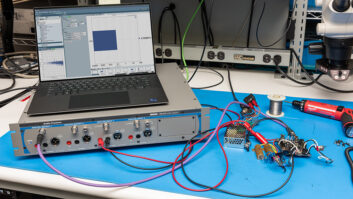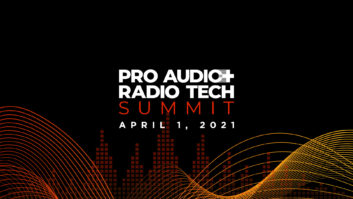Trade shows are a crucial part of the pro audio ecosystem—at each one, manufacturers release cool new gear, pros take advantage of educational offerings, and standards groups hammer out plans for the future. The shows are key, and this month will see one of the biggest, InfoComm, take place in Las Vegas.
As a whole, the various pro audio conventions are riding a wave—a nice change of pace from the early 2010s, when they were slammed by the one-two punch of the recession and the rise of social media. With fewer attendees and exhibitors due to economic belt tightening, plus social media providing a new way for users and manufacturers to interact, some feared the shows’ days might be numbered.
Today, trade shows have rebounded, and in some cases are bigger than ever. Exhibitors are aware of that more than anyone, so I asked a number of companies that will be at InfoComm for their takes on how the conventions found their way back.
Related: Audio Exhibitors Ready for InfoComm 2018, by Clive Young, May 30, 2018
“Trade shows in general have returned to the forefront,” said Darius Seabaugh, vice president of marketing, ProCo Sound. “I feel that during our recent economic uptick, people in our industry are more eager to meet face-to-face and see new technology and innovations firsthand.”
That face-to-face, real-world connection was a key factor for every company I talked to. Francesco Fanicchi, Powersoft’s brand and communications director, explained, “With social media, companies can create their lead generation program while creating and building relationships with customers. On the other hand, trade shows are places where those relationships can become real, stronger and longer—a place where people can turn a post or a ‘like’ into a more authentic brand experience.”
John Monitto, director of business development at Meyer Sound, agreed: “I think perhaps social media has had the effect of making people want to get to know companies up close. It’s still important to hear the product, to engage with the technology and to get to know the people you will be dealing with.”
Meeting in person isn’t the only factor, of course; the shows also bounced back because they innovated. “They’ve adapted and changed,” said Christopher Currier, manager, trade marketing Americas/pro audio solutions, Sennheiser. “The organizations that manage these events are spending a great deal of time and effort trying out new things, tweaking their formats, adjusting their focus and so on—and both end users and exhibitors are taking note of this effort.”
Related: InfoComm International Rebrands as AVIXA, by Clive Young, Sep. 14, 2017
Some of those experiments include efforts to attract new audiences. “I think they’re larger and better attended because there has been some co-exhibiting happening,” suggested Chris Spahr, vice president of sales and marketing, USA, at DPA Microphones. “It’s making sense to start consolidating these types of things together to help attendees navigate all the trade show options that are out there.”
Not all pro audio trade shows have recovered at the same rate, of course. “I don’t think that trend is across all our shows; some have clearly showed drops in attendance,” noted Jack Kelly, president of Group One Ltd., the U.S. distributor for DiGiCo, KLANG:technologies, XTA and others. “InfoComm is a strong show because the technology on display is being used across many markets, including corporate and retail.”
Also, while pro audio at its core is about communicating with others, trade shows provide an opportunity for the industry to communicate with itself. Discussing InfoComm, Laurent Vaissié, CEO of L-Acoustics, suggested, “I know that our technical and education teams look forward to sharing our progress with other members of the AVNU Alliance and getting familiar with more of AVIXA’s curriculum.”
The key word in Vaissié’s comment is “sharing,” because that’s what people do in a community. The industry is spread out around the globe, but a few times a year, the conventions bring thousands of pros together who talk the same tech lingo and face similar issues—and perhaps have a few solutions. As Fred Morgenstern, product director for Neutrik USA, pointed out, trade shows help foster a sense of communal spirit: “The community aspect of trade shows is wonderful. No matter how sophisticated technology gets, nothing virtual will ever match the satisfaction of face-to-face interactions with subject matter experts, peers, mentors and up-and-comers.”







